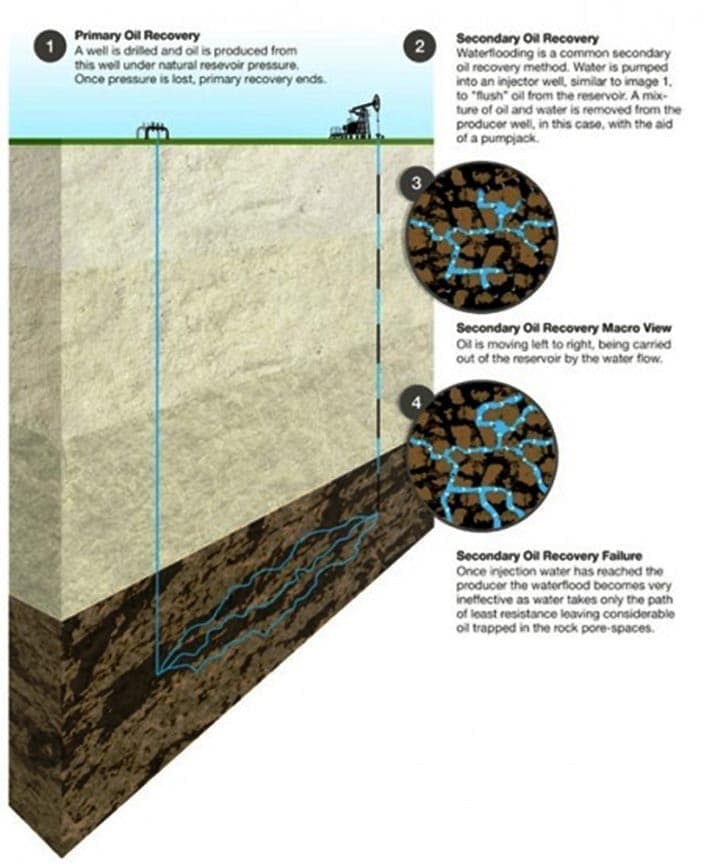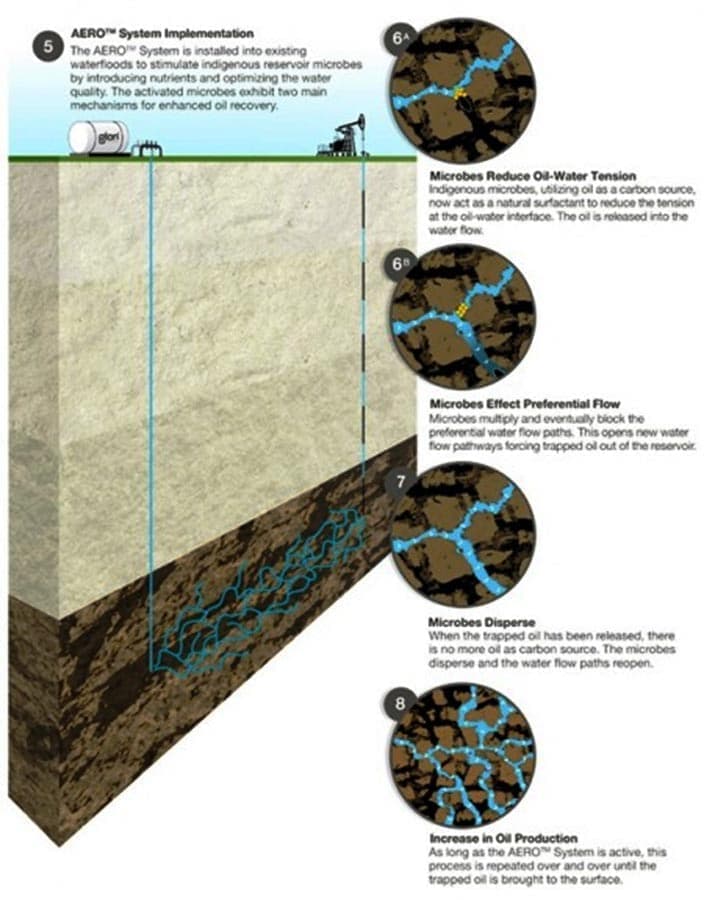Technology using natural soil bacteria for enhanced oil recovery is now commercially available and poised to recover the crude oil remaining in thousands of exhausted oil wells.
Brian Clement, Ph.D. spoke in New Orleans yesterday April 8, with his report on a process termed microbially enhanced oil recovery (MEOR) that is part of the 245th National Meeting & Exposition of the American Chemical Society (ACS). Clement’s talk was part of the symposium titled “The Interconnected World of Energy, Food and Water.”
Clement said, “The idea of using microbes to bring spent oil wells back to life dates to the early 1900s. That was the era of ‘easy-to-recover’ oil, and when a well played out, you just moved on and drilled another — knowing that 60-70 percent of the oil in that first reservoir remained untouched. We’re in a different era now. Oil is scarcer, and it makes sense to use MEOR. It can put about 10% of the oil in exhausted wells into barrels with low capital investment, low operating costs and little environmental impact.”
Clement is a senior scientist at Glori Energy, which is deploying its MEOR technology known as AERO™, for Activated Environment for Recovery of Oil. Other companies have also moved the technology to market include DuPont, which offers its MATRx™ MEOR technology and Titan Oil Recovery, Inc., which offers its Titan Process®.

Glori Energy AERO System Image 1. Click image to enlarge.
Related article: Ageing Giant Oil Fields still Dominate World Oil Production
Conventional oil production techniques rely on pressure that exists naturally in an underground reservoir to push oil to the surface, much like the pressure in a bottle of carbonated beverage. Clement explained that the pressure in a reservoir declines over time, and eventually it is too low to force oil to the surface. (Actually getting the oil to the well bore hole is enough – editor) At that point, as much as 60 to 70% of the reservoir’s oil often remains in the ground.

Glori Energy AERO System Image 2. Click the Glori Energy link in the text and go to the technology page for a more full explanation. Click image to enlarge.
Related article: Oil Exporters Must be Wary of Dependence on Oil Revenues
MEOR can retrieve that oil by fostering various changes in the reservoir. Clement explained that the AERO™ System rides along with waterflooding, a widely used process in which water is injected into the reservoir to force oil out of the well and to the surface. (well bore) The system adds a customized formula of nutrients to the injection water to optimize its quality and stimulate the growth of native reservoir bacteria.
With the AERO™ System, microbes thrive and grow to increase oil production using two main mechanisms. First, they break down and metabolize oil at the oil-water interface, allowing the oil to flow more freely. Second, the microbes block existing water channels within the reservoir’s soil, forcing the water into new channels and driving more oil to the surface.
Using the AERO™ System’s MEOR technology, oil field owners and operators can increase production from declining wells without having to invest in expensive, new infrastructure. Clement described tests in which the technology helped produce an additional 9-12 percent of the total oil remaining in reservoirs. The number may sound small, but translates into an additional $10 billion of oil from wells in the United States and more than $165 billion worldwide.
ADVERTISEMENT
The impact could become quite substantial, as more field operators and reservoirs are better understood. As it stands today, the approximately 35% of recovered oil so far would increase about a third more with the technology as explained today. That’s no small number.
Then there is the 50% still in the reservoirs. It won’t be over till its All Gone.
By. Brian Westenhaus

















